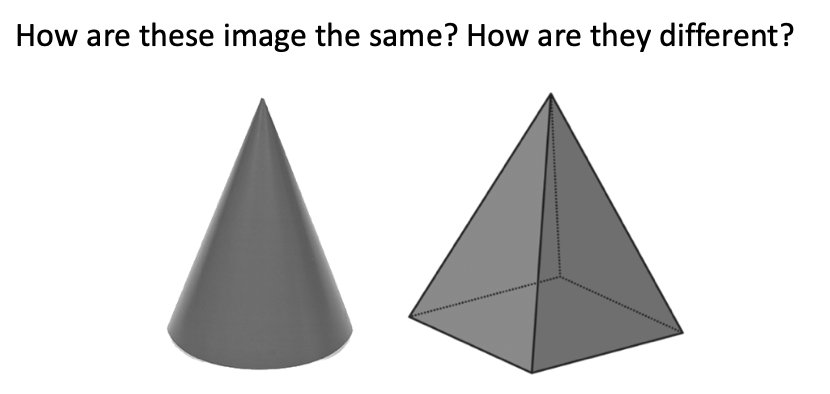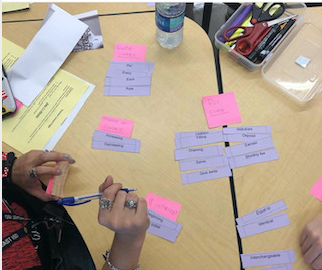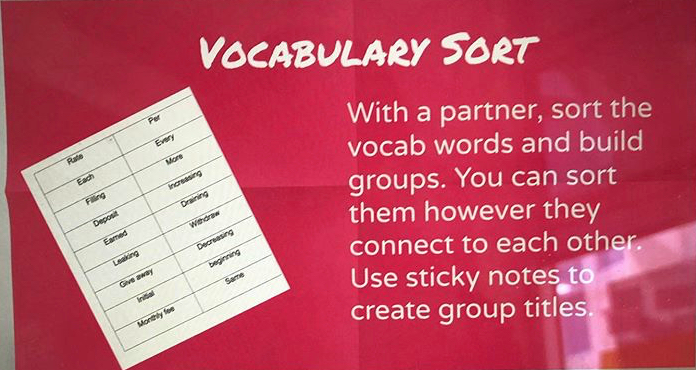Increasing Rigor with already introduced Declarative Knowledge
- Rachel Mane

- Mar 6, 2020
- 3 min read
While reading Robert J. Marzano’s “Understanding Rigor in the Classroom” I have been processing the information about declarative and procedural knowledge and apply it to the math classroom. I am currently focused on declarative knowledge after students have already been introduced to it, and have provided some examples below. Declarative knowledge rigor is defined by Marzano as “mental activities such as discerning how one type of information is different from another type.” (Marzano, 2019) The four cognitive analysis processes for declarative knowledge once student have been introduced are comparing, subordinate classifying, superordinate classifying, and constructing support.
Comparing includes finding both similarities and differences between two things. Students could compare two larger concepts such as the similarities and differences between surface area and volume or between proportional and non-proportional functions. The important piece to comparing is students identifying similarities and differences but explaining how they are determining them. I also think comparing two types of specific problems would fall under this declarative knowledge. If you give students two problems and ask them similarities and differences between the wording of a question, the diagrams provided, or graphs they are comparing characteristics of problems Samebutdifferentmath.comis a great resource for images to use and pose the question “how are these the same and how are they different?”

Students should reflect after with questions such as: “What are some similarities(or differences) that you were not previously aware of?” or “Which were harder to identify: similarities or differences?” (Marzano, 2019) These questions help students to summarize and reflect on their learning from the task they completed and form connections.
Subordinate and Superordinate classifying is a way for students to discern information in topics or categories and defend their connections. I immediately though of vocabulary sorts with writing linear equations. Possible subcategories could be positive slope negative slope, y-intercept, and equality. For subordinate classifying you could have students create the subcategories based on given vocabulary terms or provide a few subcategories and have students develop remaining subcategories. Superordinate classifying involves determining which subcategory given terms belong to. In a vocabulary sort you could essentially have students sort in both subordinate and superordinate ways. You could provide terms, have students build the subcategories, and then sort into the subcategories. Having students justify their reasoning of placing terms in subcategories will deepen their understanding of the declarative knowledge.
Another example I thought of is sorting problems. If you cut out problems and have students sort them such as graphs, word problems, tables, ordered pairs etc. Students could create subcategories in a variety of ways where they could keep the graphs all together or they could sort with direct variation(proportional) and non-proportional situations.

Lastly, constructing support is making a claim or argument and supporting it. Within constructing support is grounds, backing, and qualifier. This reminds me a lot of proofs in geometry where you are building steps to reach a conclusion and providing a reasoning for each step. Grounds is where students state reasons to support or not support a claim. In backing students provide evidence for their grounds and a qualifier is the exceptions to the claim. I believe constructing support can and should happen in every middle school and high school math class. The teacher can select a claim and have students justify whether support or do not support it. I would generalize a topic such as all exponential function grow and have students give me reasons when exponential functions would grow and when they would not grow. This makes students think about their knowledge of exponential functions and provide examples to enhance their claim. Students would focus on the characteristics of exponential functions including equations and graphs and describe how the attributes affect the function and its growth. Another example would be to have students create the claim based on characteristics provided such as generalizing. If students are given graphs of quadratic functions that have a minimum, students could claim that all quadratic functions open up. They would justify their reasoning and provide examples.
All of the examples listed above were connections I made to declarative knowledge while reading “Understanding Rigor in the Classroom.” I would love to hear other ideas you have that are math examples.


Comments